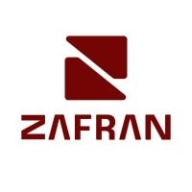


Tanium and SentinelOne Singularity Identity are both in the cybersecurity domain. SentinelOne seems to have the upper hand due to its superior feature robustness and innovative AI capabilities.
Features: Tanium provides real-time data visibility and is strong in endpoint management and patch management. It offers comprehensive security hygiene management. SentinelOne Singularity Identity focuses on identity-based security with AI-powered autonomous threat detection and response. Its advanced features emphasize automation and protection against credential theft.
Room for Improvement: Tanium could enhance its cloud-based capabilities and reduce initial infrastructure demands. It also might benefit from streamlining its integration process. SentinelOne Singularity Identity can improve its event correlation and observability features. It may also need to refine its approach to managing false positives and enhance its dashboard for usability.
Ease of Deployment and Customer Service: Tanium requires an on-premises setup which demands dedicated resources and an extensive integration process. It is known for accessible and thorough support. SentinelOne Singularity Identity offers a streamlined cloud-based deployment, reducing resource demands. Its customer service is fast and guided by expert support with a cloud-first model providing ease in deployment.
Pricing and ROI: Tanium has significant setup costs due to infrastructure needs but provides good long-term ROI through efficiencies. SentinelOne Singularity Identity offers competitive cloud-based pricing with better ROI through reduced manual tasks and faster threat resolution, valued for its cost-effectiveness and automation scalability.
| Product | Market Share (%) |
|---|---|
| SentinelOne Singularity Identity | 0.7% |
| Zafran Security | 1.0% |
| Tanium | 2.6% |
| Other | 95.7% |



| Company Size | Count |
|---|---|
| Small Business | 4 |
| Midsize Enterprise | 5 |
| Large Enterprise | 13 |
| Company Size | Count |
|---|---|
| Small Business | 5 |
| Midsize Enterprise | 3 |
| Large Enterprise | 11 |
Zafran Security integrates with existing security tools to identify and mitigate vulnerabilities effectively, proving that most critical vulnerabilities are not exploitable, optimizing threat management.
Zafran Security introduces an innovative operating model for managing security threats and vulnerabilities. By leveraging the threat exposure management platform, it pinpoints and prioritizes exploitable vulnerabilities, reducing risk through immediate remediation. This platform enhances your hybrid cloud security by normalizing vulnerability signals and integrating specific IT context data, such as CVE runtime presence and internet asset reachability, into its analysis. No longer reliant on patch windows, Zafran Security allows you to manage risks actively.
What are the key features of Zafran Security?
What benefits can users expect from Zafran Security?
In industries where security is paramount, such as finance and healthcare, Zafran Security provides invaluable protection by ensuring that only exploitable vulnerabilities are addressed. It allows entities to maintain robust security measures while allocating resources efficiently, fitting seamlessly into existing security strategies.
Singularity Identity, a component of the Singularity platform, provides threat detection & response (ITDR) capabilities to defend Active Directory and domain-joined endpoints in real-time from adversaries aiming to gain persistent, elevated privilege and move covertly. Singularity Identity provides actionable, high-fidelity insight as attacks emerge from managed and unmanaged devices. It detects identity misuse and reconnaissance activity happening within endpoint processes targeting critical domain servers, service accounts, local credentials, local data, network data, and cloud data. On-agent cloaking and deception techniques slow the adversary down while providing situational awareness and halting adversarial attempts at lateral movement. Singularity Identity helps you detect and respond to identity-based attacks, providing early warning while misdirecting them away from production assets.
Singularity Identity’s primary use case is to protect credential data and disrupt identity-based attacks. The most valuable function of Singularity Identity is its ability to misdirect attackers by providing deceptive data to identity-based recon attacks. Additionally, it can hide and deny access to locally stored credentials or identity data on Active Directory domain controllers.
Singularity Identity also provides rapid detection and respond to identity attacks, capturing attack activity and feeding it directly to the Singularity platform’s Security DataLake for enterprise-wide analysis and response.
By implementing Singularity Identity, organizations benefit from enhanced security, reduced credential-related risks, and improved user productivity. It detects and responds to identity-based attacks, ensuring only authorized individuals can access critical identity data. With its cloaking capabilities to hide identity stored locally on endpoints or in the identity infrastructure and it’s ability to provide decoy results to identity-based attacks, organizations can effectively secure their sensitive or privileged identities, resulting in improved overall identity security.
Tanium offers robust endpoint protection, patching, and inventory management, consolidating the functions of tools like BigFix with capabilities in incident response, network security, and cloud or on-premise deployments.
Known for real-time capabilities, Tanium provides detailed analytics, security features, and device management. Users benefit from quick implementation, real-time updates, and patching campaigns. Despite its strengths, integration and custom plugin expansion remain areas to improve, along with data visualization and network optimization. Reporting enhancements and user training could advance its usability, and some UI elements may require updates for clarity and security.
What are the essential features of Tanium?Tanium's deployment spans industries focusing on endpoint protection and compliance, ensuring reliable device and server management in settings where safety and quick adaptation are critical. Organizations use it for application deployment, compliance checks, and integrating it as an EDR solution, enhancing overall security and operational efficiencies.
We monitor all Vulnerability Management reviews to prevent fraudulent reviews and keep review quality high. We do not post reviews by company employees or direct competitors. We validate each review for authenticity via cross-reference with LinkedIn, and personal follow-up with the reviewer when necessary.